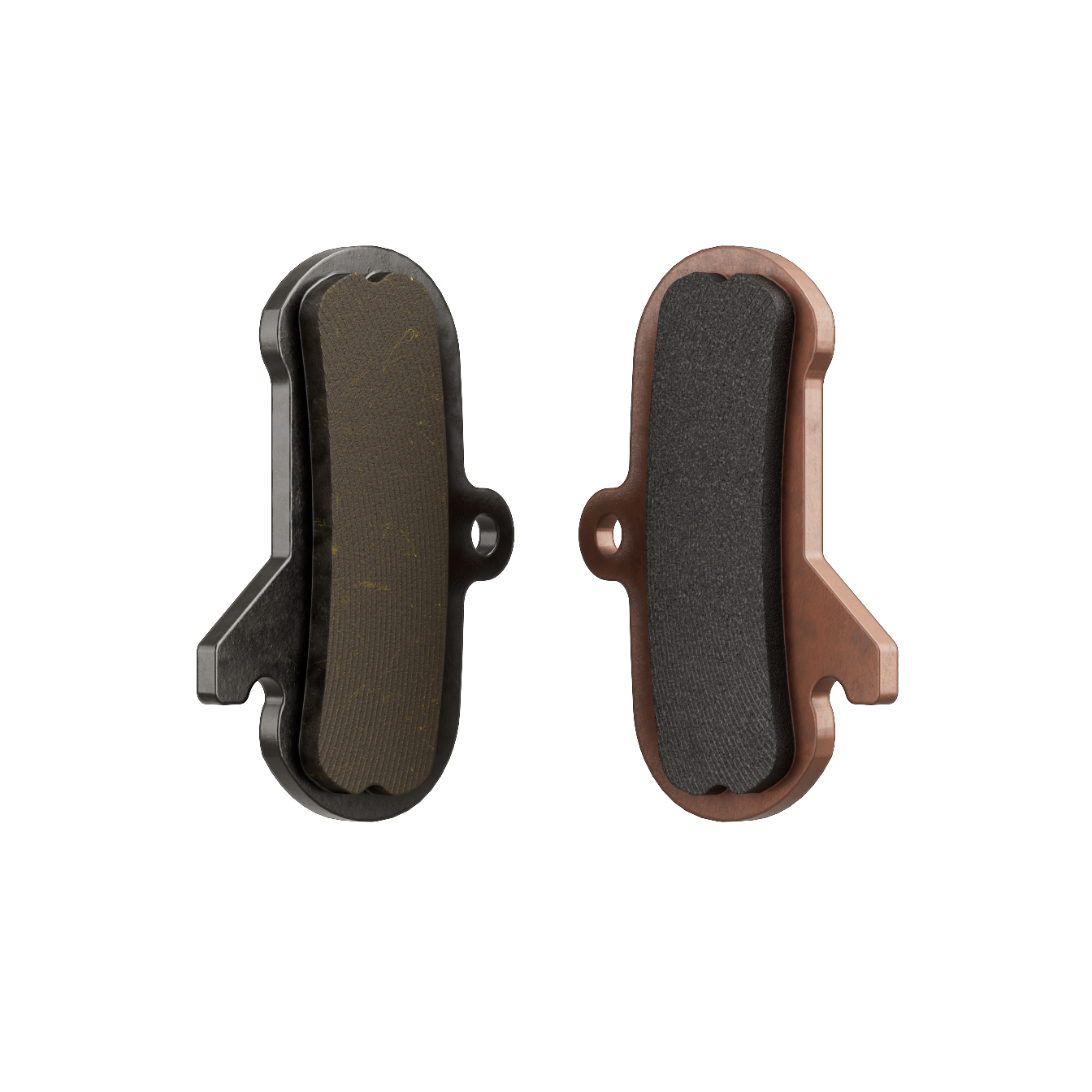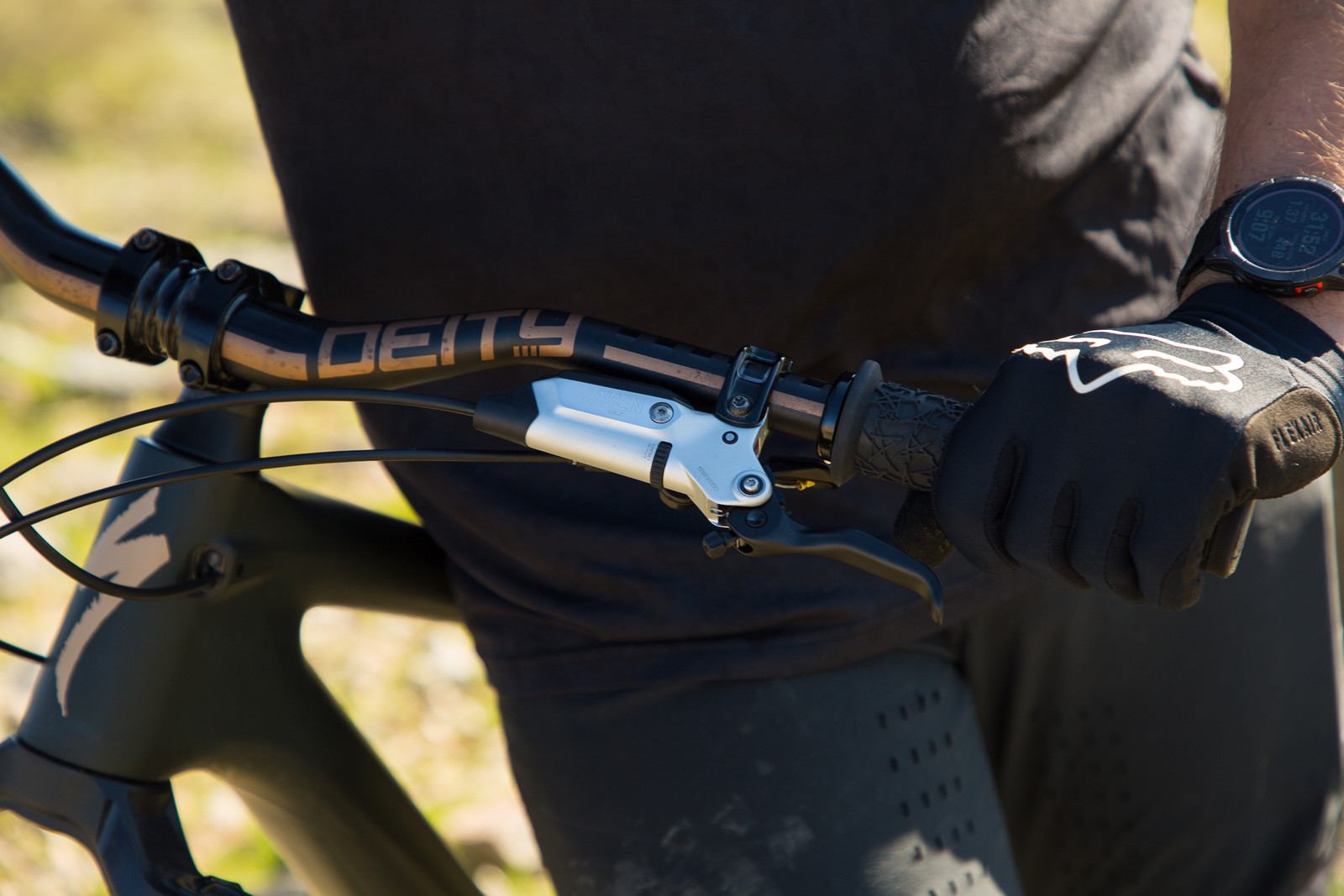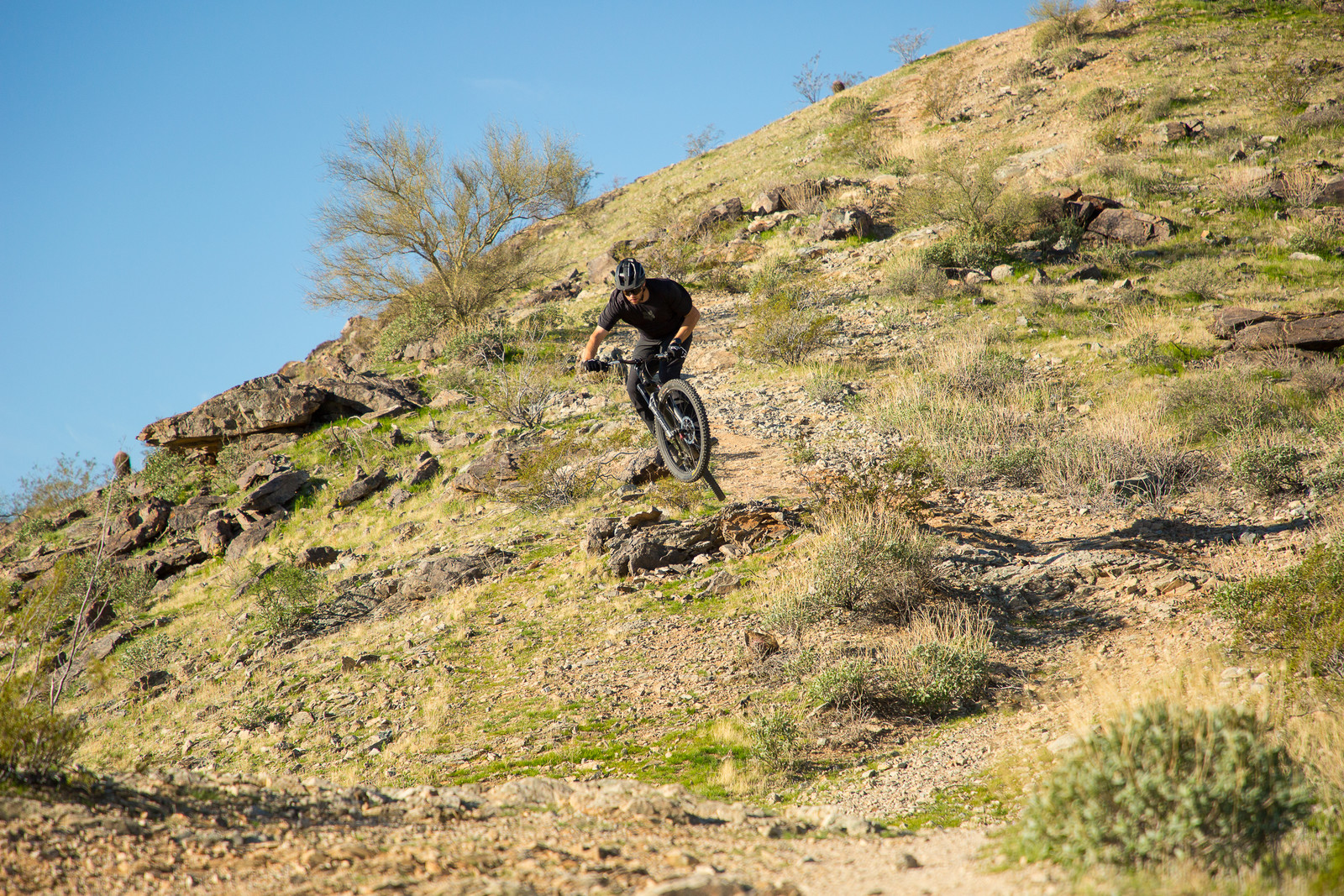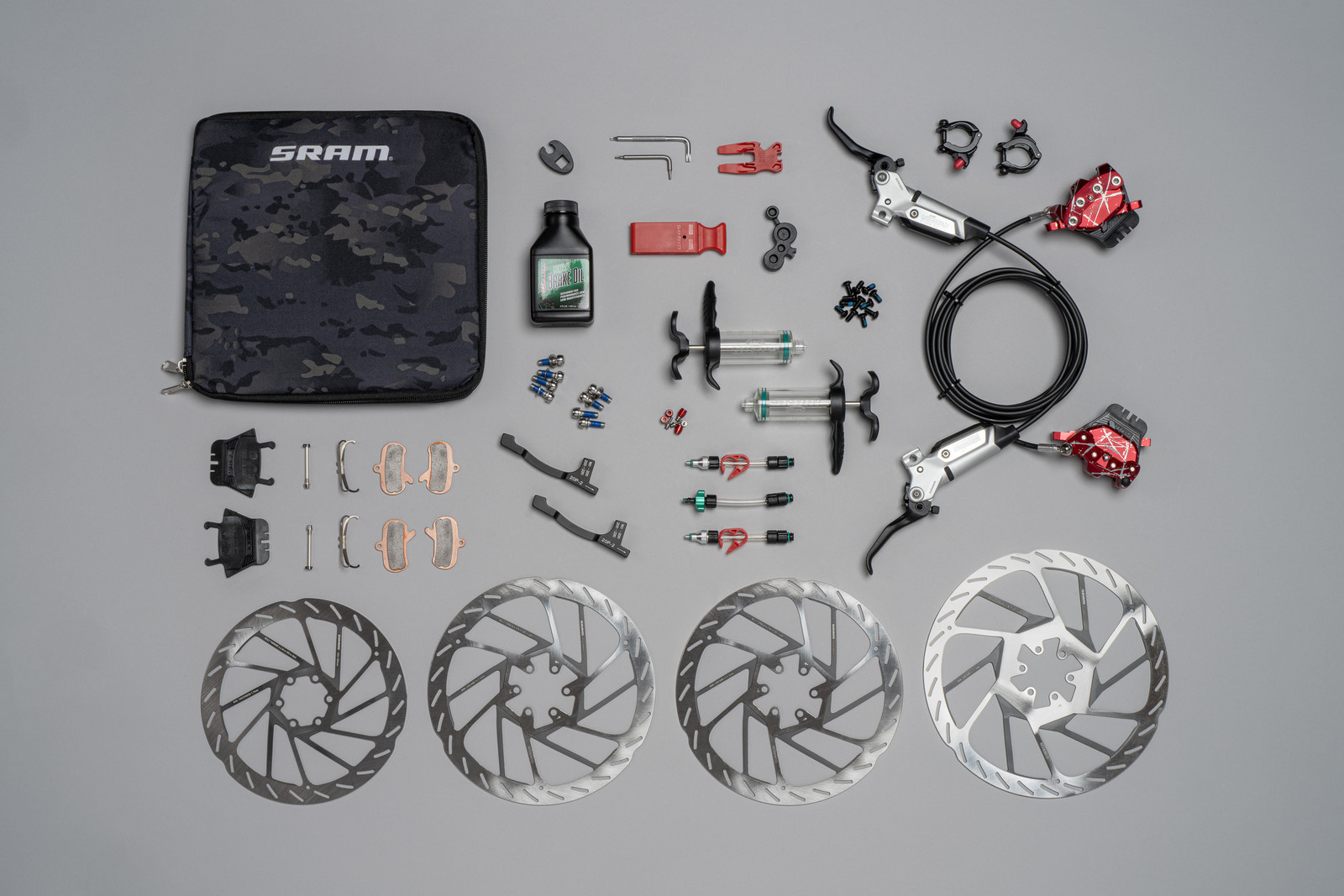After a long-awaited journey of tech forum spy photo enhancing and humorous bleed port etching, the new MAVEN brakes from SRAM are finally here! The purpose of the MAVEN brakes is not only to bring more braking power to bikes but also to create the most usable power possible out of a braking system. Figuring out how much power is actually usable on a bike is a painstaking process, and SRAM has done their homework extensively over the last few years to learn what that limit is. Is there such a thing as too much braking power?
SRAM MAVEN Ultimate Highlights
- Mineral oil
- 18.5mm & 19.5mm pistons
- New larger surface area metallic/resin pads
- Bleeding Edge interface
- MatchMaker X compatible
- Limited Edition Ultimate Expert Kit
- Offered in Ultimate, Silver, and Bronze levels
- Weight: 362g per line (Ultimate)
- MSRP: $185-599 USD ($599 Ultimate Expert Kit tested)

What's Gained Over Code Brakes?
SRAM switched to mineral oil with their latest brakes for the simple reason of better seal technology. Switching to the fluid allowed them to explore more sophisticated seal options, generating the rollback characteristics they wanted to achieve from the piston seals. What's rollback? It's how the pistons within the caliper retract and is dictated by the amount of drag the seals create, ultimately affecting things like lever return speed and bite point sensitivity. This increase in sensitivity was achieved through the use of a two-step seal behind the piston, which unravels more similarly to the sealing interface found in most automobile applications. An added benefit of this design in terms of durability is the elimination of needing to maintain a seal around the pots housed within the caliper. The switch to these seals paired with larger bores within the caliper body helps generate around 50% more power than Code brakes, with 30% less force required to pull the lever.


Speaking of the calipers, they are freaking huge, with four large bolts running through them, housing a set of 18.5mm and 19.5mm pistons with bottom-loading brake pads. SRAM made these calipers large intentionally after countless variations of trial and error to find the optimal caliper mass and stiffness to maximize the characteristics they were looking for. What they learned from this project is that brakes with more mass help maintain an optimal operating temperature. While keeping brakes cool is great, the Maven calipers' additional mass is designed to keep power more consistent by maintaining a more consistent operating temperature.

Initial Impressions
I was intrigued by the fact that better seal technology was the motivating factor in SRAM switching to mineral oil from DOT fluid for these brakes. As someone who has spent years as a mechanic, I am certainly not sad to see DOT fluid go, but in that time, I have seen less than impressive service intervals from some mineral oil brakes. Particularly in terms of how long the fluid lasts before it is entirely black after shorter periods of use than I'd expect. It is interesting to see how the seals used within the Mavens help eliminate this factor by improving the sealing interface and simultaneously lightening lever action.

Visually, the Maven lever assemblies are slightly bigger than Code levers, and the hose exits at a flatter angle than SRAM's Stealth brake lineup. In terms of lever feel, the lever blade feels similar to most SRAM brakes, but the throw is significantly lighter and shorter than a Code. The difference feels subtle in the stand, but even a parking lot test reveals how much less effort is required to reach what would previously be considered full power. The brake pads have tabs that allow for easy removal and a handy recess where the pad spring can latch into place to keep things nice and aligned for reinstallation.
Setup
Setting up a set of Maven brakes is as easy as any other SRAM brake, with things like the Stealthamajig threaded needle and olive that thread together and the Bleeding Edge port that helps eliminate any mess. However, the Mavens do have an extra step now, which requires a few cycles of the pistons to get things primed and set into place. The initial setup requires two to three cycles of the pistons through their full range of motion to help the two-step seals settle into place and center. I made the genius decision of ignoring this step on my initial setup and can confirm it is necessary. After referring to the troubleshooting portion of the owner's manual, I slotted two brake rotors into the caliper, cycled the pistons until they made contact, and then spread them back to the open position a couple of times. After this exercise, my experience was night and day, and I finally experienced the light lever throw and full power the Mavens were designed to have.



On Trail
My first ride on the Mavens resulted in my questioning why I would ever run a 220mm rotor up front and a 200mm rotor out back on my 150mm travel trail bike. While this combo feels quite good for pretty much any trail on a set of Code Ultimate brakes, it feels pretty over the top when paired with Mavens and the loose, rocky soil in Phoenix, Arizona. The trails on South Mountain are certainly not the steepest overall, but they require a fair amount of braking when things do get steep from a lack of traction. The power was a bit overwhelming at first and I found the front wheel locking up even with most of my weight over the front of the bike. This required some recalibration at the lever, reminding myself not to pull as hard as I normally would and relaxing my hands a bit more instead.

This made it pretty difficult to modulate the brakes as I learned how little the lever actually needed to move to make the kind of power I'd been used to. The extra power would be more useful with more traction on hand, but I'd never experienced such overwhelming power with such little lever throw. While I've only got a couple of rides on the brakes thus far, swapping to a 200mm front rotor from my usual 220mm significantly helped keep the bike under control and made the stopping power much more useful. This is where the MAVEN Expert Kit comes in handy.

MAVEN Ultimate Expert Kit
With the level of anticipation surrounding these brakes, it's cool to see SRAM equally as eager to get these in the hands of riders. As part of the launch, they are offering 2,000 limited sets of Expert Kits to help tune braking power for the specific needs of users. At $599, it costs the equivalent of two individual Ultimate-level brakes.
The kit includes:
- Maven Ultimate brake set with limited edition Red Splash anodized calipers
- 2x organic and 2x sintered XL brake pad sets
- 4x HS2 rotors (1x 220mm, 2x 200mm, 1x 180mm)
- A 180mm rotor.
- 2x 20mm post-mount adapters.
- 2x MatchMaker X clamps
- Pro mineral oil bleed kit
- Rotor travel bag
- MSRP: $599 USD

In recent years, the biggest rotors paired with specialty pad compounds have become the norm for maximizing power out of brakes. This is not the case with the MAVENs, as such a significant increase in power warrants experimenting to find a useful combination for rotors and pad compounds. As I experienced on my first ride, a 220mm rotor up front was entirely too much for Phoenix; with the Expert Kit, I had more options to choose from and even different pad compounds if rotors alone didn't do the trick. Where Codes sort of reach a limit for power that applies to most terrain types, smaller rotor options on MAVENs will be legitimately useful for those who regularly ride or race different types of terrain.

What's the Bottom Line?
It is no secret that SRAM brakes have a love-hate relationship with many riders, which usually comes down to an improper initial setup. Long-time mechanics will have different reasons for their feelings; reliability issues with SRAM brakes of the past are no secret, but that's a story for a different time. Regardless of how you feel about SRAM brakes, the Mavens are sure to shift the perspective of what a set of gravity-focused brakes should feel like. The level of stopping power combined with more advanced seal technology and less corrosive fluid inside seems like a sure way to make power and durability concerns a thing of the past.
For more information on the MAVEN brakes, please visit sram.com
View key specs, compare, and rate the new SRAM Maven brakes in the Vital MTB Product Guide.
About The Tester
Jonathon Simonetti - Age: 30 // Years Riding MTB: 21 // Height: 6’4” (1.93m) // Weight: 230-pounds (97.5kg)
Jonny started mountain biking in 2003 after a trip to Northstar showed him how much more could be ridden on 26” wheels than on a BMX bike. He began racing downhill in 2004 and raced for 12 years until ultimately deciding having fun on a bike was more important than race results. After working as a mechanic in the industry for a few years and developing a deeper understanding of bikes inside and out, he has an aptitude for pairing his riding ability with the analysis of bikes and breaking down what makes them work well. He spends most of his time between trail rides and skatepark sessions, with occasional days on the downhill bike.






